The Economics and Statistics Division maintains archives of previous publications for accountability purposes, but makes no updates to keep these documents current with the latest data revisions from Statistics Canada. As a result, information in older documents may not be accurate. Please exercise caution when referring to older documents. For the latest information and historical data, please contact the individual listed to the right.
<--- Return to Archive
For additional information relating to this article, please contact:
December 12, 2022RESIDENTIAL HEATING FUEL AND EQUIPMENT, 2021 As part of the 2021 Survey of Households and the Environment, Statistics Canada surveyed Canadian households on the type of energy used primarily for residential heat as well as the type of equipment used as the main heating source.
Residential heating energy source, 2021
Across Canada, natural gas was the most commonly used energy source for residential heating in 2021. At 44% of residential energy, natural gas was just ahead of electricity. However, this was primarily in Ontario and the western provinces. Natural gas made up only a small share of residential heating energy in Quebec and the Atlantic provinces. Nova Scotia's use of natural gas amounted to only 5% of residential energy.
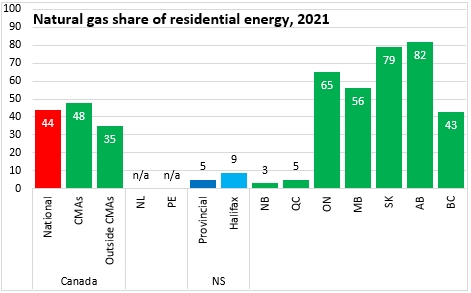
Electricity was Canada's second most common source of residential heating energy in 2021 (43%). This was notably higher in Quebec as well as in Newfoundland and Labrador, New Brunswick, Manitoba and British Columbia. Electricity accounted for just under a third (32%) of Nova Scotia's residential heating energy in 2021.
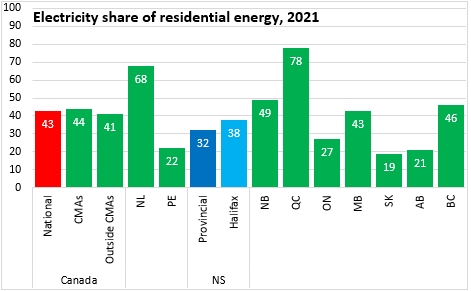
Unlike the rest of Canada, fuel oil makes up a large share of residential heating energy in Nova Scotia at 32% - tied with electricity as the most widely used residential heating energy in the province. Only Prince Edward Island (40%) depends more heavily on fuel oil for residential heating. Across Canada, fuel oil makes up just 3% of residential heating energy, with very low usage in all provinces from New Brunswick to British Columbia.
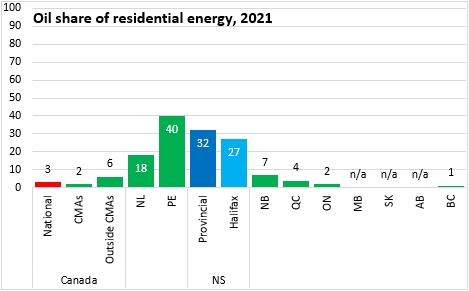
Although wood is a less common source of residential heating energy (2% of the national total), it is more commonly used in Atlantic Canada. Including solid wood as well as pellets, 10% of Nova Scotia's residential heating energy is fuelled by wood.
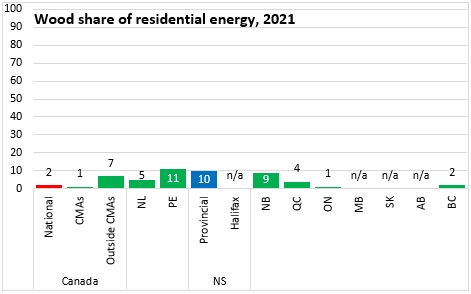
Residential heating equipment, 2021
The forced air furnace was the most common appliance used to generate residential heating across Canada. Forced air furnaces made up 51% of residential heating equipment in Canada with notably higher shares in Ontario and Western Canada. Forced air furnaces were used in 23% of Nova Scotia residences in 2021 and were less commonly used across Quebec and the rest of Atlantic Canada.
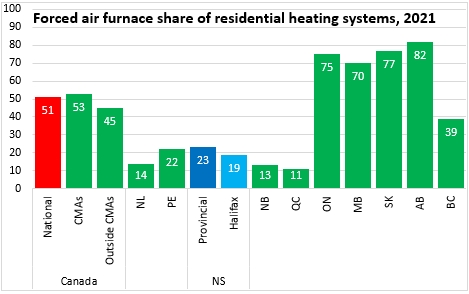
Electric baseboard heaters amounted to 25% of Canada's residential heating equipment. The share of electric baseboard heaters was higher in Quebec, Newfoundland and Labrador and New Brunswick. In Nova Scotia 21% of residences used electric baseboard heaters.
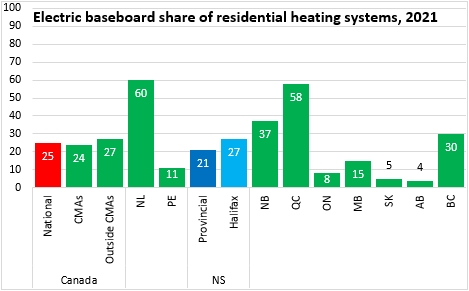
Boilers with water or steam radiators were used in only 8% of Canadian residences, but this was higher in both Nova Scotia (17%) and Prince Edward Island (23%).

In Nova Scotia, 21% of residences used a heat pump as the primary energy equipment. Heat pumps were also more widely used in the Maritime provinces than across the rest of Canada (6% share nationally).
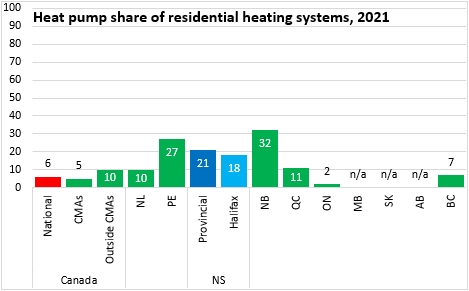
Trends
Since 2013, there has been a notable decline in the share of residential heating provided by oil. There have been small declines for electricity and wood while natural gas (as well as other sources) have increased.
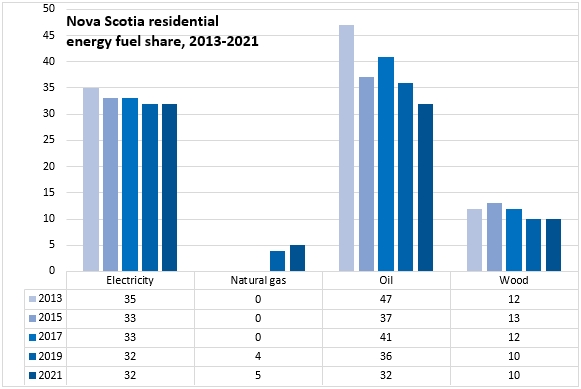
Since 2013, there has been a substantial rise in the share of residences equipped with a heat pump in Nova Scotia. There have been declines in the use of forced air furnaces, electric baseboard heaters and boilers/radiators. As of 2021, the use of heat pumps is the same as that of electric baseboards (21%), just behind the use of forced air furnaces (23%) and ahead of boilers/radiators (17%). Although it accounts for a smaller portion of residential heating equipment (5%), the use of electric radiant heating has risen.
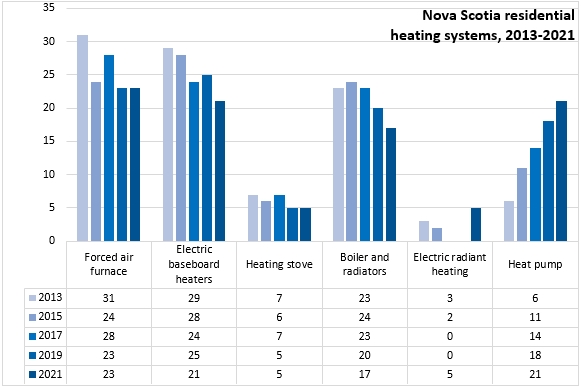
Source: Statistics Canada. Table 38-10-0286-01 Primary heating systems and type of energy
<--- Return to Archive